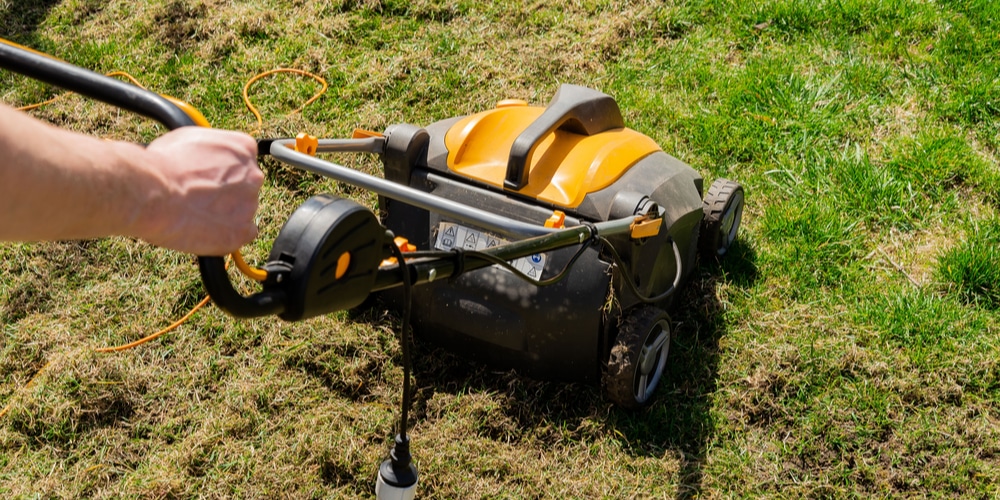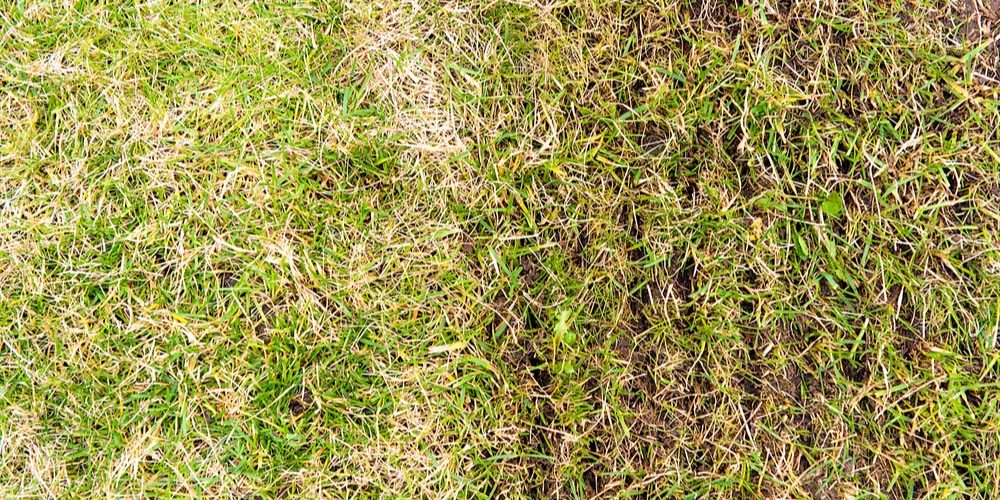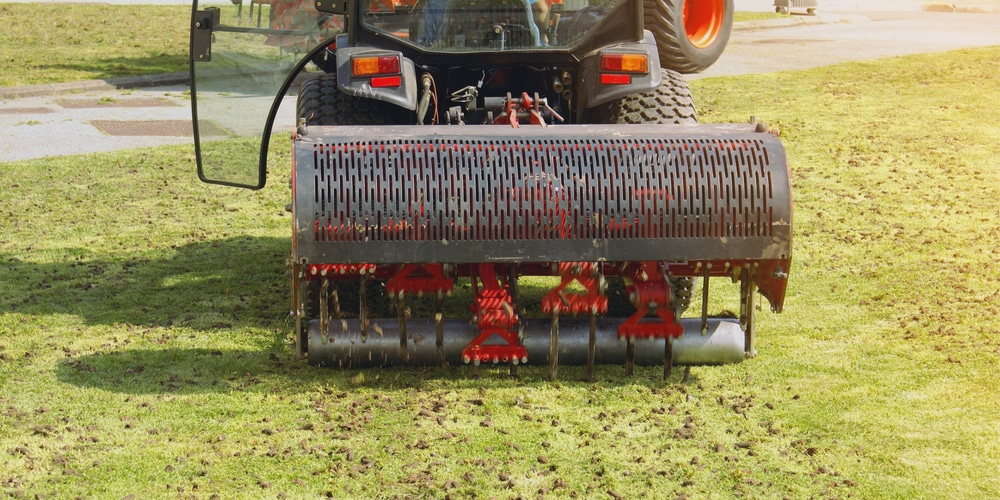Scarifiers and aerators are similar lawn care tools, but they have distinct differences that make them useful for different purposes. This article will compare scarifier vs. aerator to help you decide what to buy.
Quick answer
A scarifier is primarily used for removing thatch from the lawn while an aerator is designed to create holes in the soil to allow air and water to penetrate deeper into it.
Is a scarifier the same as an aerator?

A scarifier is not the same as an aerator. Both are tools used to maintain lawns; however, their uses differ slightly.
A scarifier is a tool used to remove moss, weeds, debris, and thatch from the ground’s surface. It has blades or tines that cut into the soil, removing the thatch buildup.
On the other hand, an aerator is a tool used to create small holes in the soil. This allows air, water, and fertilizer to penetrate deeper into the ground, which promotes healthy grass growth.
What does a scarifier do?
Scarifiers are mainly used to break up compacted soils and remove surface debris like moss and weeds. The blades or tines of the scarifier cut into the soil, creating a rough and uneven surface. This helps to aerate the lawn by improving drainage and allowing water and air to penetrate deeper into the soil. Scarifiers are also effective at removing thatch, which can hinder plant growth if it builds up too much.
While a scarifier does help with air circulation, it doesn’t create holes that are as deep as an aerator. Aeration is not the scarifier’s primary purpose, and a scarifier shouldn’t be used to aerate a lawn.
Scarifiers are best used in spring and fall when the soil is soft and easier to break up. They should not be used on dry or overly wet soils, as this can damage the blades or tines.
After scarifing, you should rake up the debris that have been removed and add them to your compost pile.
What is an aerator used for?
Aerators are used to create tiny holes in the soil. This allows air and water to penetrate deeper into the ground, which promotes plant growth by providing oxygen and nutrients.
The holes created by aerators also help with drainage, preventing areas of standing water that can lead to pooling and other issues. Additionally, aerators can be used to remove surface debris, though they are less effective for this purpose than scarifiers.
There are many different types of aerators on the market, from machines that can be used to cover a larger area to small manual aerators. You can even use a garden fork to aerate your lawn. Aeration can be done at any time of year.
Do I need to scarify and aerate my lawn?
Scarifying and aerating your lawn can help maintain a healthy, green lawn. Scarifiers are best used in the spring or fall when the soil is soft, while aerators can be used any time of year.
Both tools can be helpful in maintaining a healthy lawn; however, if you only need to remove moss or weeds from your lawn, a scarifier is the better choice.
Conclusion
Scarifiers and aerators are both useful tools for maintaining lawns. While they have similar uses, scarifiers are mainly used to break up compacted soils and remove thatch. Aerators are primarily used to create small holes in the soil to allow air and water to penetrate deeper into it.
Knowing the differences between a scarifier vs. an aerator can help you decide which tool is right for your lawn care needs.

